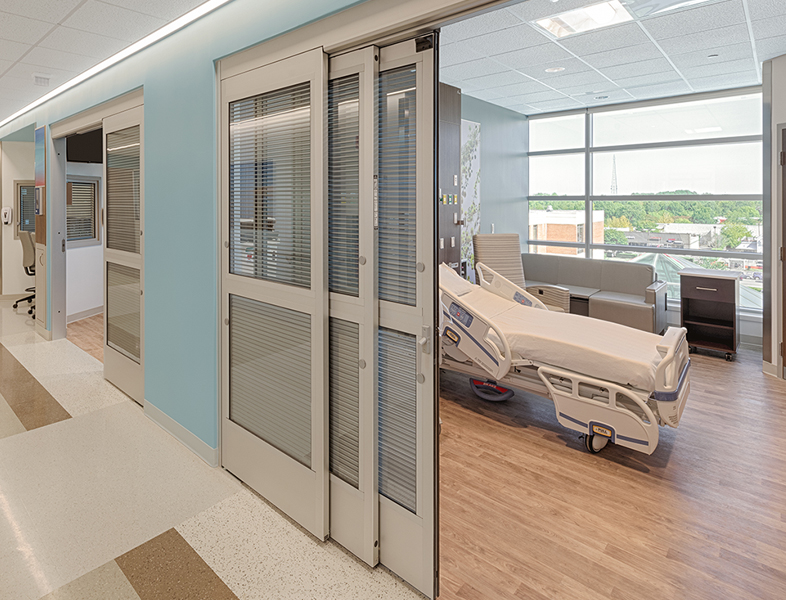Hardware for residential and business settings just keeps getting smarter, with everything from windows and doors to lightbulbs now equipped with Internet of Things (IoT) capabilities.
Indeed, building owners now have the option of deploying sensors and internet-connected devices in almost every piece of hardware they own.
But to what end? Why has smart hardware become so important for building owners of all stripes? And what are the most popular smart hardware types for commercial applications?
The Growing Importance of Smart Hardware
The growing importance of smart security hardware is best illustrated by the smart building market’s rapid pace of growth: Analysts predict it will reach more than $175B by 2030, up more than double from $73.7B in 2022.
This predicted growth is partly driven by the growing availability of smart devices capable of providing advanced automation, intelligent facility management, security features, and energy optimization for businesses.
Smart devices combine hardware and internet-connected software to create intelligent devices that can sense, record, and, in some cases, analyze data about usage, security threats, and other events. Another calling card of smart devices is their ability to send alerts to users or back-end systems for real-time situational awareness.
Smart devices and hardware now play a crucial role in the operation of modern residential and commercial properties. Smart buildings and homes offer numerous benefits, including energy savings, cost reductions, environmental sustainability, occupant comfort, safety, and operational efficiency.
Smart buildings – essentially an ecosystem of smart devices – collect actionable data from these devices and other inputs and analyze the data using AI and machine learning algorithms to find efficiencies and improve operations.
Smart commercial and institutional buildings often leverage technology such as power over ethernet (PoE), which powers devices via ethernet cabling, to make this possible.
Here are several reasons why smart hardware is important:
Enhanced safety: Smart security hardware helps safeguard individuals and assets by deterring and preventing potential security threats.
Energy efficiency: Smart buildings leverage advanced technologies such as sensors, automation systems, and predictive analytics to optimize energy usage. They can adjust lighting, heating, and cooling systems based on occupancy levels, weather conditions, and other factors to reduce energy waste and lower operational costs.
Remote monitoring and control: Property owners can monitor their premises remotely, enabling real-time surveillance and the ability to respond quickly to security events. Facility managers can access real-time data to diagnose issues, make adjustments, or dispatch maintenance teams from anywhere, improving operational efficiency and responsiveness.
Cost savings: Improving energy efficiency and streamlining operations can significantly reduce smart buildings’ utility bills and maintenance expenses.
Real-time remote alerts: Smart devices send instant alerts and notifications to property owners or designated authorities when certain events are detected, such as a malfunctioning HVAC system.
Data collection and analysis: Many smart security devices capture data on occupancy patterns, energy usage, system performance, and other activities, patterns, and incidents. Analyzing this data allows building managers to make more informed decisions to optimize operations and improve efficiency.
What Kind of Smart Security Hardware is Out There?
Smart hardware for residential and commercial properties encompasses various types of devices. Most smart hardware shares several elements in common, including the ability to capture usage and other data, integrate with other smart devices, and send alerts to mobile devices.
But be warned – smart devices also have a dark side in that every connected device is a potential attack surface for hackers. Every smart device, even your smart lighting, can be hacked by bad actors. Prepare your building’s security posture accordingly.
That said, here are some of the most common pieces of intelligent hardware in commercial and institutional development:
Smart cameras: Includes indoor and outdoor cameras, doorbell cameras, and pan-tilt-zoom (PTZ) cameras. They provide real-time video monitoring and motion detection, and often feature two-way audio communication and real-time alerts for building owners. Many modern cameras offer facial recognition and integration with other smart home systems.
Smart cameras are often paired with smart surveillance systems, which combine cameras, sensors, and alarms to provide automated alerts and protection for larger properties or commercial establishments.
Smart door locks: Smart door locks enable keyless entry through features such as keypad codes, biometric scans (fingerprint or facial recognition), or smartphone connectivity. Some even have palm recognition or can be programmed to give specific friends or colleagues short-term access. Some smart locks offer sensors that can tell if doors or windows are ajar.
Smart sensors: While sensors are present in most smart devices, we’re specifically talking here about motion sensors, door/window sensors, and glass break detectors. These devices detect movement or unauthorized entry and trigger alarms or alert building owners or security providers.
Smart smoke/carbon monoxide detectors: These detectors not only sound alarms but also send audio or video alerts to smartphones, providing early warnings of potential disasters. Some models allow integration with other smart systems for automated responses, such as turning off other systems in case of fire.
Smart lighting: Smart light bulbs can be programmed to turn off and on automatically based on schedules or motion detection. Smart buildings can automatically reduce electric lighting levels based on the amount of natural light in the building, optimizing costs.
Smart security panels/control systems: Centralized smart building hubs allow users to manage and monitor all connected devices from a single interface.
Smart surveillance systems: These comprehensive systems combine cameras, sensors, alarms, and monitoring services to provide continuous surveillance and protection for larger properties or commercial establishments.
Conclusion: Buildings Will Only Get Smarter
though smart hardware and the smart buildings they empower are more prone to cybersecurity issues, the benefits of intelligent building devices are too great to ignore. They provide greater comfort, security, control, cost savings, and real-time situational awareness than standard hardware.
At the same time, the growing ubiquitousness and lower price points of smart hardware mean nearly everyone—from managers of modern skyscrapers to humble homeowners—can likely afford to make their building smarter.
That, combined with the lower energy and operational costs that typically accompany smart hardware devices, makes the technology a no-brainer for virtually every building owner.
News and Updates
The latest from Unicel Architectural

Smart Security Hardware: Why Your Next Window May Have Situational Awareness
- Blog, Innovation
Vision Control® Mini in Doors
Product Spotlight - Blog, Product Spotlight

